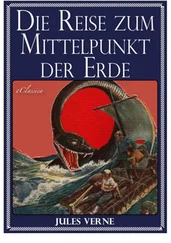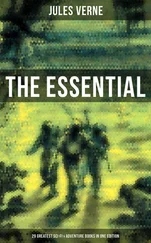Jules Verne - The Pearl of Lima - A Story of True Love
Здесь есть возможность читать онлайн «Jules Verne - The Pearl of Lima - A Story of True Love» — ознакомительный отрывок электронной книги совершенно бесплатно, а после прочтения отрывка купить полную версию. В некоторых случаях можно слушать аудио, скачать через торрент в формате fb2 и присутствует краткое содержание. Жанр: foreign_prose, на английском языке. Описание произведения, (предисловие) а так же отзывы посетителей доступны на портале библиотеки ЛибКат.
- Название:The Pearl of Lima: A Story of True Love
- Автор:
- Жанр:
- Год:неизвестен
- ISBN:нет данных
- Рейтинг книги:4 / 5. Голосов: 1
-
Избранное:Добавить в избранное
- Отзывы:
-
Ваша оценка:
- 80
- 1
- 2
- 3
- 4
- 5
The Pearl of Lima: A Story of True Love: краткое содержание, описание и аннотация
Предлагаем к чтению аннотацию, описание, краткое содержание или предисловие (зависит от того, что написал сам автор книги «The Pearl of Lima: A Story of True Love»). Если вы не нашли необходимую информацию о книге — напишите в комментариях, мы постараемся отыскать её.
The Pearl of Lima: A Story of True Love — читать онлайн ознакомительный отрывок
Ниже представлен текст книги, разбитый по страницам. Система сохранения места последней прочитанной страницы, позволяет с удобством читать онлайн бесплатно книгу «The Pearl of Lima: A Story of True Love», без необходимости каждый раз заново искать на чём Вы остановились. Поставьте закладку, и сможете в любой момент перейти на страницу, на которой закончили чтение.
Интервал:
Закладка:
"Brutal and cowardly!" exclaimed André.
"Control yourself," said Milleflores, softly. "Let us leave the Plaza-Mayor; the Limanienne ladies are too haughty here."
As he said these words, the brave Milleflores looked cautiously around to see whether he was not within reach of the foot or arm of some Indian in the neighborhood.
"In an hour, I must be at the house of Jew Samuel," said André.
"In an hour! we have time to pass to the Calle del Peligro ; you can offer some oranges or ananas to the charming tapadas who promenade there. Shall we go, gentlemen?"
The group directed their steps toward the extremity of the square, and began to descend the street of Danger, where Milleflores hoped his good looks would be appreciated; but it was nightfall, and the young Limaniennes merited better than ever their name of tapadas (hidden), for they drew their mantles more closely over their countenances.
The Plaza-Mayor was all alive; the cries and the tumult were redoubled; the guards on horseback, stationed before the central portico of the viceroy's palace, situated on the north side of the square, could scarcely maintain their position amid the shifting crowd; there were merchants for all customers and customers for all merchants. The greatest variety of trades seemed to be congregated there, and from the Portal de Escribanos to the Portal de Botoneros , there was one immense display of articles of every kind, the Plaza-Mayor serving at once as promenade, bazaar, market and fair. The ground-floor of the viceroy's palace is occupied by shops; along the first story runs an immense gallery where the crowd can promenade on days of public rejoicing; on the east side of the square rises the cathedral, with its steeples and light balustrades, proudly adorning its two towers; the basement story of the edifice being ten feet high, and containing warehouses full of the products of tropical climates.
In the centre of this square is situated the beautiful fountain, constructed in 1653, by the orders of the viceroy, the Comte de Salvatierra. From the top of the pillar, which rises in the middle of the fountain and is surmounted with a statue of Fame, the water falls in sheets, and is discharged into a basin beneath through the mouths of lions. It is here that the water-carriers ( aguadores ) load their mules with barrels, attach a bell to a hoop, and mount behind their liquid merchandise.
This square is therefore noisy from morning till evening, and when the stars of night rise above the snowy summits of the Cordilleras, the tumult of the élite of Lima equals the matinal hubbub of the merchants.
Nevertheless, when the oracion (evening angelus ) sounds from the bell of the cathedral, all this noise suddenly ceases; to the clamor of pleasure succeeds the murmur of prayer; the women pause in their walk and put their hands on their rosaries, invoking the Virgin Mary. Then, not a merchant dares sell his merchandise, not a customer thinks of buying, and this square, so recently animated, seems to have become a vast solitude.
While the Limanians paused and knelt at the sound of the angelus , a young girl, carefully surrounded by her discreet mantle, sought to pass through the praying multitude; she was followed by a mestizo woman, a sort of duenna, who watched every glance and step. The duenna, as if she had not understood the warning bell, continued her way through the devout populace: to the general surprise succeeded harsh epithets. The young girl would have stopped, but the duenna kept on.
"Do you see that daughter of Satan?" said some one near her.
"Who is that balarina – that impious dancer?"
"It is one of the Carcaman women." (A reproachful name bestowed upon Europeans.)
The young girl at last stopped, blushing and confused.
Suddenly a gaucho , a merchant of mules, seized her by the shoulder, and would have compelled her to kneel; but he had scarcely laid his hand upon her when a vigorous arm rudely felled him to the ground. This scene, rapid as lightning, was followed by a moment of confusion.
"Save yourself, miss," said a gentle and respectful voice in the ear of the young girl.
The latter turned, pale with terror, and saw a young Indian of tall stature, who, with his arms tranquilly folded, was awaiting with firm foot the attack of his adversary.
"We are lost!" exclaimed the duenna; " niña, niña , let us go, for the love of God!" and she seized the arm of the young girl, who disappeared, while the crowd rose and dispersed.
The gaucho had risen, bruised with his fall, and thinking it not prudent to seek revenge, rejoined his mules, muttering threats.
CHAPTER II
EVENING IN THE STREETS OF LIMA
Night had succeeded, almost without intervening twilight, the glare of day. The two women quickened their pace, for it was late; the young girl, still under the influence of strong emotion, maintained silence, while the duenna murmured some mysterious paternosters – they walked rapidly through one of the sloping streets leading from the Plaza-Mayor.
This place is situated more than four hundred feet above the level of the sea, and about a hundred and fifty rods from the bridge thrown over the river Rimac, which forms the diameter of the city of Lima, arranged in a semicircle.
The city of Lima lies in the valley of the Rimac, nine leagues from its mouth; at the north and east commence the first undulations of ground which form a part of the great chain of the Andes: the valley of Lungaucho, formed by the mountains of San Cristoval and the Amancaës, which rise behind Lima, terminates in its suburbs. The city lies on one bank of the river; the other is occupied by the suburb of San Lazaro, and is united to the city by a bridge of five arches, the upper piers of which are triangular to break the force of the current; while the lower ones present to the promenaders circular benches, on which the fashionables may lounge during the summer evenings, and where they can contemplate a pretty cascade.
The city is two miles long from east to west, and only a mile and a quarter wide from the bridge to the walls; the latter, twelve feet in height, ten feet thick at their base, are built of adobes , a kind of brick dried in the sun, and made of potter's clay mingled with a great quantity of chopped straw: these walls are calculated to resist earthquakes; the enclosure, pierced with seven gates and three posterns, terminates at its south-east extremity by the little citadel of Santa Caterina.
Such is the ancient city of kings, founded in 1534 by Pizarro, on the day of Epiphany; it has been and is still the theatre of constantly renewed revolutions. Lima, situated three miles from the sea, was formerly the principal storehouse of America on the Pacific Ocean, thanks to its Port of Callao, built in 1779, in a singular manner. An old vessel, filled with stones, sand, and rubbish of all sorts, was wrecked on the shore; piles of the mangrove-tree, brought from Guayaquil and impervious to water, were driven around this as a centre, which became the immovable base on which rose the mole of Callao.
The climate, milder and more temperate than that of Carthagena or Bahia, situated on the opposite side of America, makes Lima one of the most agreeable cities of the New World: the wind has two directions from which it never varies; either it blows from the south-east, and becomes cool by crossing the Pacific Ocean; or it comes from the south-west, impregnated with the mild atmosphere of the forests and the freshness which it has derived from the icy summits of the Cordilleras.
The nights beneath tropical latitudes are very beautiful and very clear; they mysteriously prepare that beneficent dew which fertilizes a soil exposed to the rays of a cloudless sky – so the inhabitants of Lima prolong their nocturnal conversations and receptions; household labors are quietly finished in the dwellings refreshed by the shadows, and the streets are soon deserted; scarcely is some pulperia still haunted by the drinkers of chica or quarapo .
Читать дальшеИнтервал:
Закладка:
Похожие книги на «The Pearl of Lima: A Story of True Love»
Представляем Вашему вниманию похожие книги на «The Pearl of Lima: A Story of True Love» списком для выбора. Мы отобрали схожую по названию и смыслу литературу в надежде предоставить читателям больше вариантов отыскать новые, интересные, ещё непрочитанные произведения.
Обсуждение, отзывы о книге «The Pearl of Lima: A Story of True Love» и просто собственные мнения читателей. Оставьте ваши комментарии, напишите, что Вы думаете о произведении, его смысле или главных героях. Укажите что конкретно понравилось, а что нет, и почему Вы так считаете.












